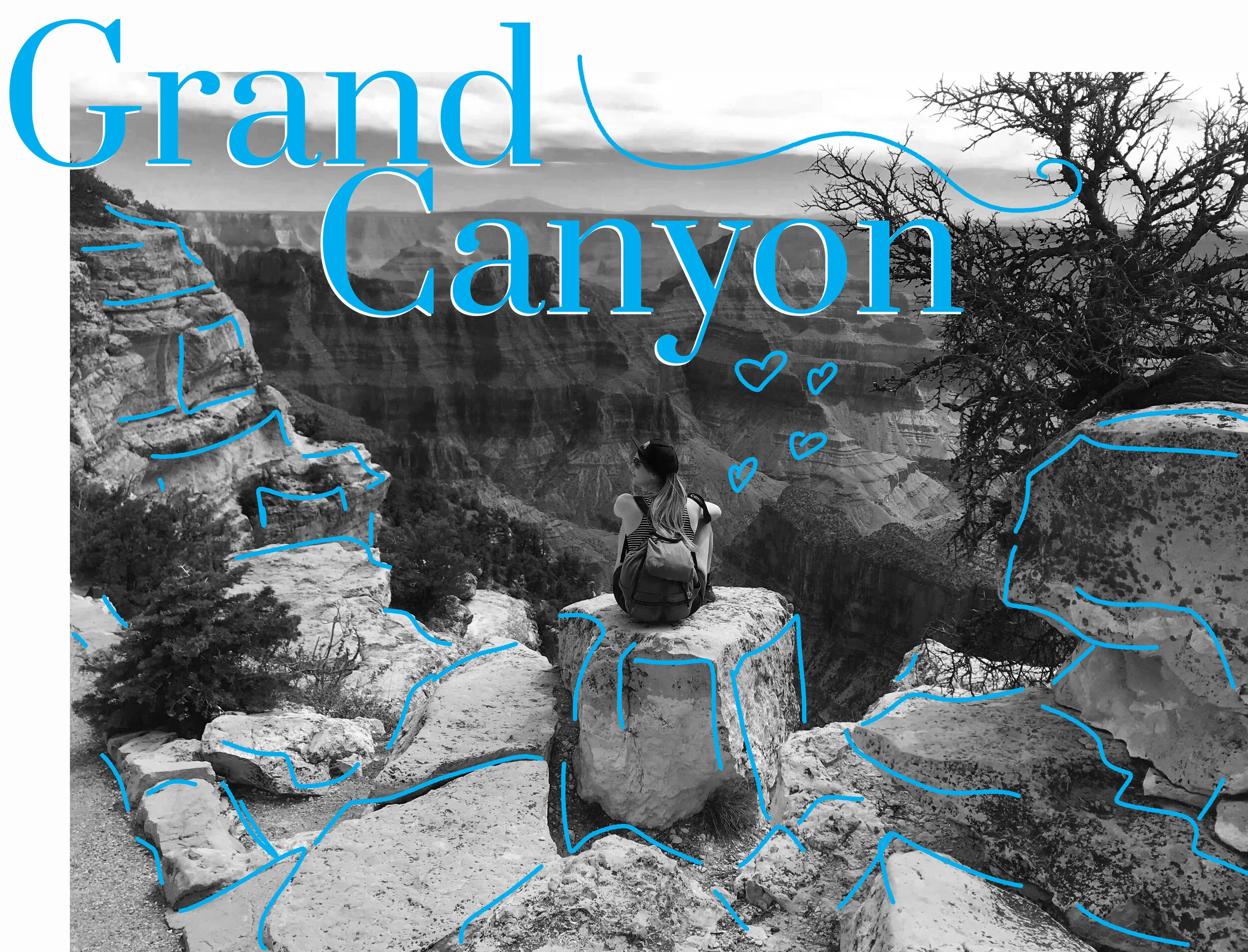Grand Canyon North | Don’t miss the north rim
The north rim of the Grand Canyon is every bit as unmissable as the south
So then, after a bite out in Marble, we drove up into the night, nearly 5000 ft. It was around 8pm when we left Marble Canyon and nearly 11pm when we got into the Grand Canyon North Rim Lodge. That drive was nerve-wracking.
We set off in the dark, we’d had patchy signal, and we couldn’t be fully sure we’d be able to check in past 10pm. Frontier Psychiatrist by The Avalanches came on Ben’s playlist. We’d entered into this long, winding and—although still wide by UK standards—much narrower road than we were used to. Following the Colorado river on a satellite map, and looking at the line where the landscape completely changes, is astounding. The road skirts this, of course.
All we knew, from this road, is that we kept climbing from desert and dust into pines and mountains. Then we nearly hit a fucking deer.
I was immediately impressed by how remarkably calm and reactive Ben was—the literal deer in the headlights just looked at us and pranced off into the forest. Things got weirder. We caught up with two cars. They slowed, perhaps also afraid of the deer. The pulled over altogether, so we passed. We went by and, some minutes later, they started up behind us. Lots of horror films are set on a lonely road, right? There’s never any phone signal, right? We drove on, quite silent at this point. It felt like we’d never get there.
The cars seemed to disappear. We were finally on a flat of sorts and could see the edges of a field on both sides of the road. We saw a herd of large animals, which we later discovered was most likely “beefalo”—a cross-breed of bison and domestic cattle.
Apparently, they make great burgers. Eventually we arrived at the lodge, and—of course—it was fine to check in. It was incredible to get there in the dark. Once we dropped off our things in the little log cabin, we came back to the main building to decompress. This building felt like something out of Twin Peaks—a kind of viking banquet hall entirely built from stone, the roof built into the sky. The darkness out there maybe only felt so huge because we knew in the morning we’d see this massive crevasse.
Almost 70% of visitors to the Grand Canyon go to the South Rim, so we were in a minority. And even though the park was basically full, we woke up to a peaceful log cabin village. The smell of the woods was stunning.
We went back to the main hall to catch the view. The night before we’d spoken to one of the chaps that helps manage the grounds and he’d told us about the plants, trees, and animals we could expect to see. I asked him about bears and he explained we’d be lucky to catch one—he had no idea I was truly hoping not to. He told us to look out for the Kaibab Squirrel—a cute black and white species unique to the area due to geographic isolation. It’s tempting to imagine the gigantic canyon is what isolated it, but it was actually the Ice Age.
Other creatures of interest included the smallest of scorpions and the hugest of wasps. I found out some time after we left the big GC that this was the most venomous of scorpos in the USA—the Bark Scorpion.
I can’t tell you how fast it was and that surprised me, which I suppose was more related to seeing it in real life as opposed to from the safety of a David Attenborough video. They shine up real nice under a black light, so I guess next time I’ll bring a special torch to Arizona. The wasp looked to be like some kind of Paper Wasp, which, despite looking like an absolute monster, apparently don’t sting too much.
So, the canyon. It’s nearly 300 miles long, 18 miles wide, and over a mile deep. It’s been thought for a long time that the Colorado river carved it out around 5–6 million years ago. Word on the latest, however, is that around 70% of it was forged 70 million years ago—long before the Colorado even existed.
That being said, there are some that argue there are two canyons, one in the east and one in the west. I offer no opinion, except that it’s a breathtaking and mind-blowing place to be. I read recently that there are even hidden caves inside the canyon walls—only one of which is open to the public—as the Redwall limestone is dissolved by water, thus creating them. I just love everything about this planet.
My favourite thing about panos: Stretched out humans.




















































